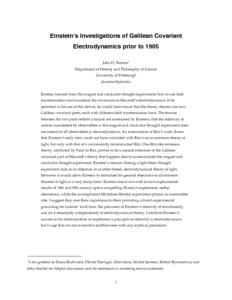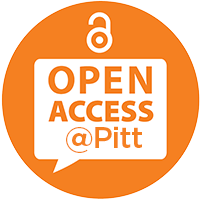Norton, John D.
(2004)
Einstein’s Investigations of Galilean Covariant Electrodynamics prior to 1905.
(Unpublished)
![[img]](http://d-scholarship.pitt.edu/2682/1.hassmallThumbnailVersion/galilean_covariant.pdf)  Preview |
|
PDF (Einstein’s Investigations of Galilean Covariant Electrodynamics prior to 1905)
Download (856kB)
| Preview
|
Abstract
Einstein learned from the magnet and conductor thought experiments how to use field transformation laws to extend the covariance to Maxwell’s electrodynamics. If he persisted in his use of this device, he would have found that the theory cleaves into two Galilean covariant parts, each with different field transformation laws. The tension between the two parts reflects a failure not mentioned by Einstein: that the relativity of motion manifested by observables in the magnet and conductor thought experiment does not extend to all observables in electrodynamics. An examination of Ritz’s work shows that Einstein’s early view could not have coincided with Ritz’s on an emission theory of light, but only with that of a conveniently reconstructed Ritz. One Ritz-like emission theory, attributed by Pauli to Ritz, proves to be a natural extension of the Galilean covariant part of Maxwell’s theory that happens also to accommodate the magnet and conductor thought experiment. Einstein's famous chasing a light beam thought experiment fails as an objection to an ether-based, electrodynamical theory of light. However it would allow Einstein to formulate his general objections to all emission theories of light in a very sharp form. Einstein found two well known experimental results of 18th and19th century optics compelling (Fizeau’s experiment, stellar aberration), while the accomplished Michelson-Morley experiment played no memorable role. I suggest they owe their importance to their providing a direct experimental grounding for Lorentz’ local time, the precursor of Einstein’s relativity of simultaneity, and do it essentially independently of electrodynamical theory. I attribute Einstein’s success to his determination to implement a principle of relativity in electrodynamics, but I urge that we not invest this stubbornness with any mystical prescience.
Share
| Citation/Export: |
|
| Social Networking: |
|
Details
Metrics
Monthly Views for the past 3 years
Plum Analytics
Actions (login required)
 |
View Item |








